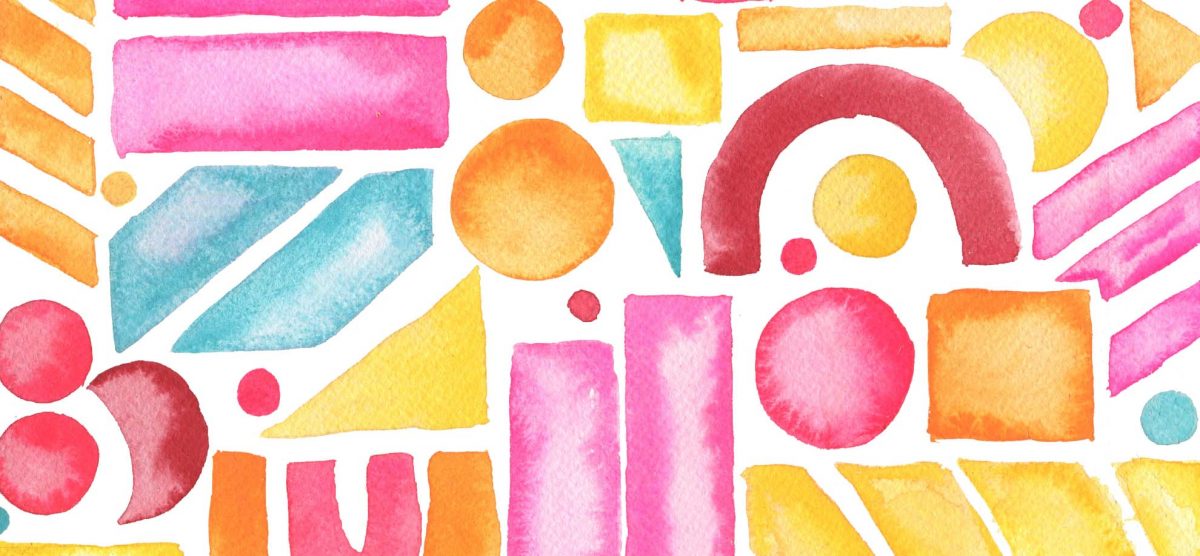If you’re a beginner watercolour artist, you might find that your paintings don’t always look exactly like the subject! I know that was true for me when I started out, and if often is the case now. It might feel frustrating or restrictive to be trying to copy a reference photo or paint something from life.
What if you just want to have fun and make something colourful and creative, without worrying about its likeness? Well if this is you, welcome to the world of abstract watercolour painting!
This is one of my favourite activities for watercolour beginners – it’s a great way to play around with the medium and get used to how your watercolour supplies are acting. It’s also a good way to learn the different techniques in watercolour without being overwhelmed by details or preliminary sketches.
Abstract watercolour paintings are also great warm-ups before moving onto a bigger piece, or for a quick painting session if you’re pushed for time. I still love to do these in my art practice. Plus if you’re up for scanning them, they can often be turned into really beautiful patterns.
Here are my top beginner-friendly abstract watercolour painting ideas!
What is abstract painting?
Abstract painting is a style that doesn’t have a clear, recognisable subject from reality, but instead is focused on shapes, colours and marks. It’s not a painting of something, but a painting that celebrates the medium, paint colours and movement.
Easy abstract watercolour painting ideas
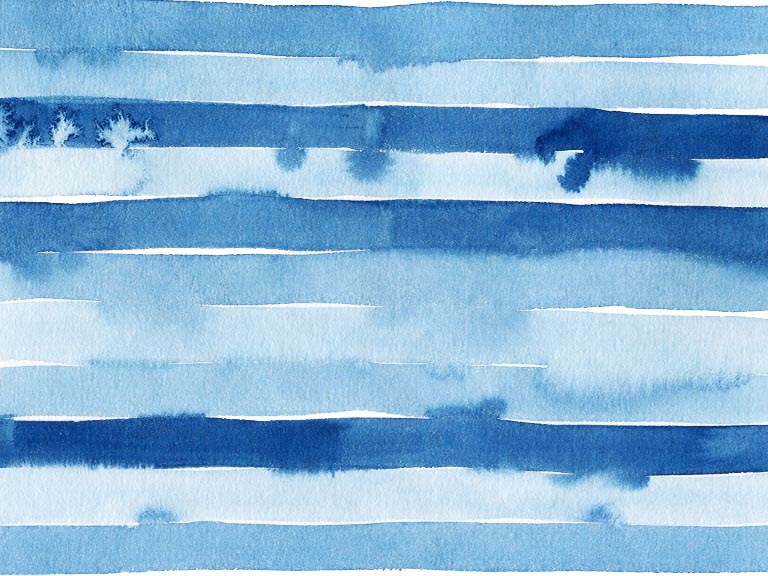
Simple lines
This is a great abstract painting idea to try with a flat watercolour brush and a simple colour palette. Drag your brush along the page to create a line, then use a different colour or value to create a line underneath, allowing it to touch in places. It will create beautiful bleeds and blends between the lines.
Aim for a monochrome piece by using more or less water to make the lines darker or lighter, or use a harmonious colour palette with three similar colours such as blue, purple and pink.
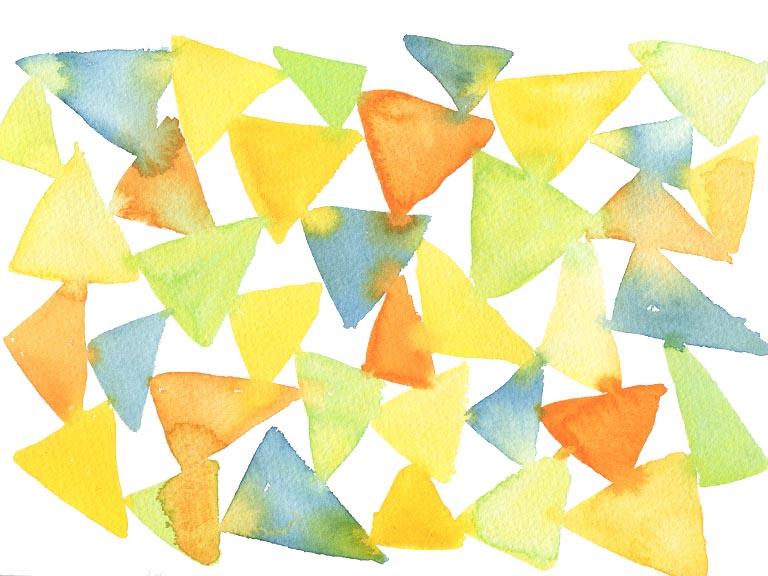
Basic shapes wet on wet
This abstract watercolour idea is great for practising the wet on wet technique. Choose a simple shape like a circle or triangle, and a harmonious colour palette.
Paint your first shape in one colour, then grab a second colour and paint a second shape next to it, allowing it to touch a little. The paints should bleed together, creating stunning effects as the painting dries.
Try adding more or less water to make your colours lighter or darker, and make your shapes bigger and smaller too to keep the contrast high. Fill your whole page for an easy watercolour warm up too!
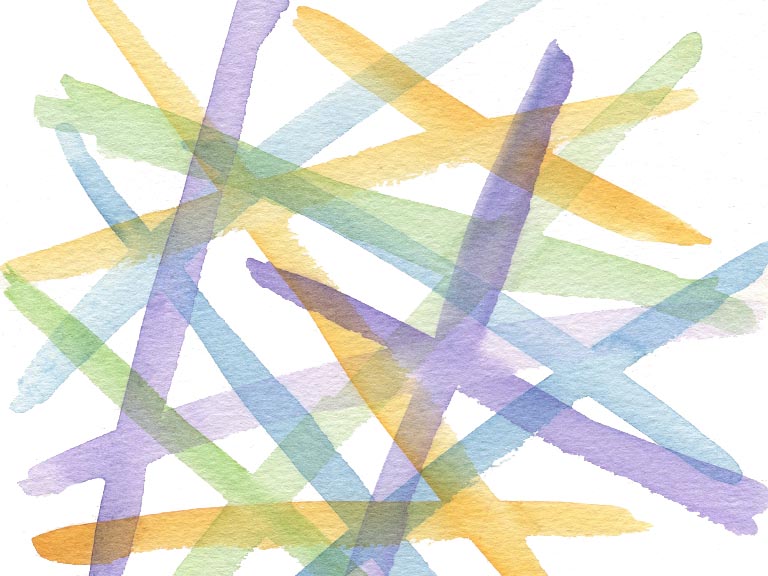
Glazed ribbons
This is similar to the lines idea but with all the strokes crossing over each other. It’s a great technique to make the most of how translucent watercolour is. You’ll need to be a bit more patient with this wet-on-dry style as each layer has to dry before you add the next one.
Pick your first colour and mix up a light value with loads of water. Then pull a few strokes across the page, either straight or wavy, or a mixture! Let them cross in places and leave it to dry fully. On the second layer, use a different colour but again a light value, and add more lines, crossing over your first ones. You should get a beautiful colour mix where the paints are layered. Keep going with as many layers as you like!
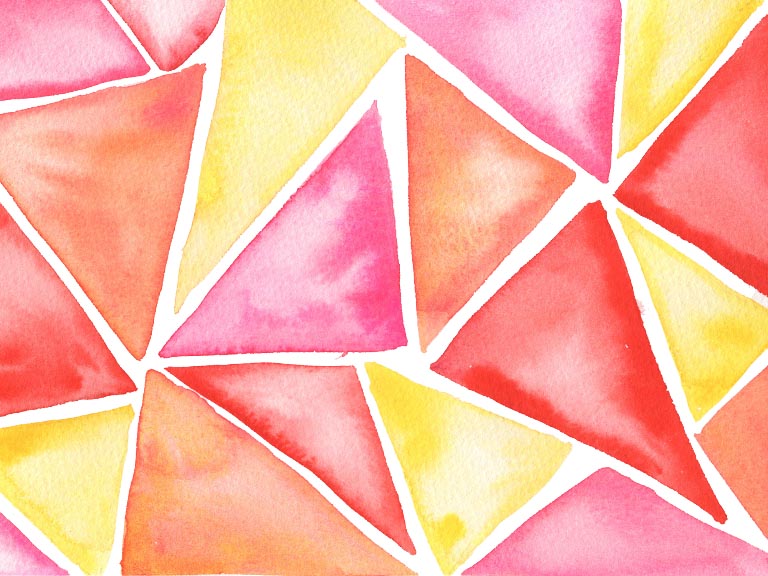
Triangle pattern
If you’re looking for something punchy, this is one of my favourite abstract watercolour ideas! Using a light pencil, sketch out some triangle shapes at random on your paper. Leave a thin gap between your triangles that we won’t be painting on. If you have a fine Washi tape, you can also lay this out crisscrossing the page instead.
Once you’re ready to paint, outline your shapes with your chosen colour and fill in with water before the edges can dry. It should create a beautiful watery effect, and you can add to it by adding more paint around the edge and watching it bleed in. Or use your brush to touch and smudge areas inside the shape to create speckled effects.
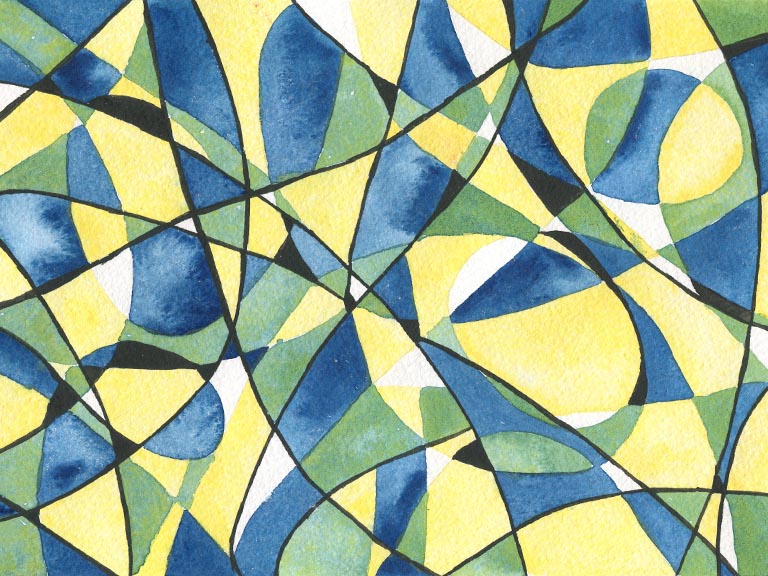
Random pencil pattern
This is one of my all-time favourite abstract painting ideas! Tape down a piece of watercolour paper to keep it still, then grab a pencil. Using loose movements, draw all over your paper! Make sweeping arcs and spirals and cross over the lines as much as possible. You should be left with a set of clearly marked shapes.
Grab your favourite paint colours and start filling in the shapes! You can use a harmonious colour palette or make it punchier like I did with contrasting colours. When you’re done, use a fine brush or black pen to go over your pencil lines to divide all the shapes.
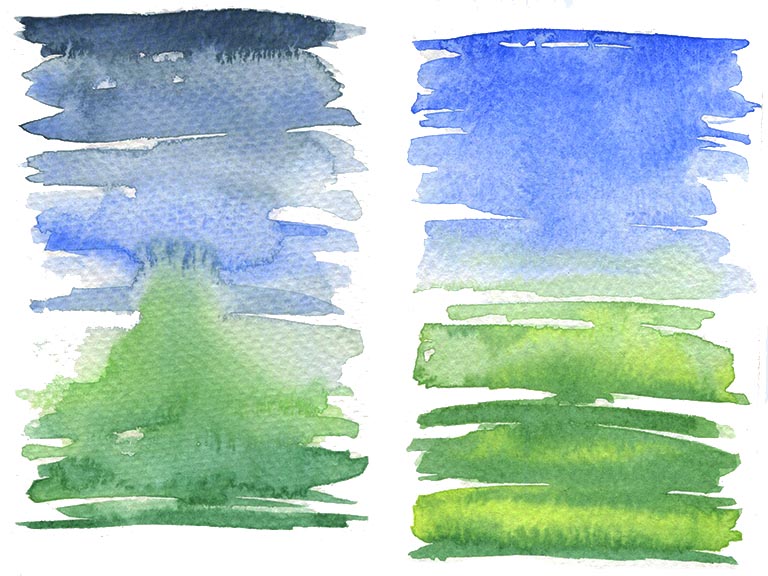
Abstract landscapes
Create the easiest 5-minute watercolour landscape paintings with this trick! I cut up some watercolour paper into small rectangles, approximately the size of a pack of playing cards. Then I used a blue paint to create some random horizontal strokes across the top half. Put down a few darker strokes and go back with a very light value to connect them, allowing them to bleed together.
Complete the painting with the same method in a green paint for the bottom half. You should have an abstract landscape painting! You can mix this up with different colours, adding pinks and red to the skies, or use dark blue over light blue for an ocean sky.
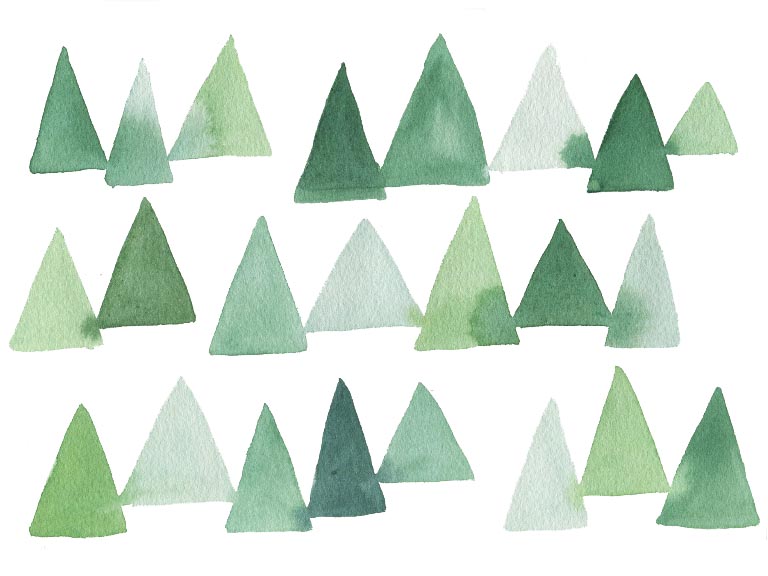
Line of ‘trees’
If you like the abstract landscape painting, this is another great one! I used this to make a Christmas card design and it couldn’t be easier.
Mix up your favourite greens and paint a long triangle shape, like a simplified fir tree. Using a different colour or value, paint a second tree next to it, making sure to change up the size and placement so they’re not sitting in a perfect line. Carry on until you have a row of pretty ‘trees’ all touching each other and bleeding together.
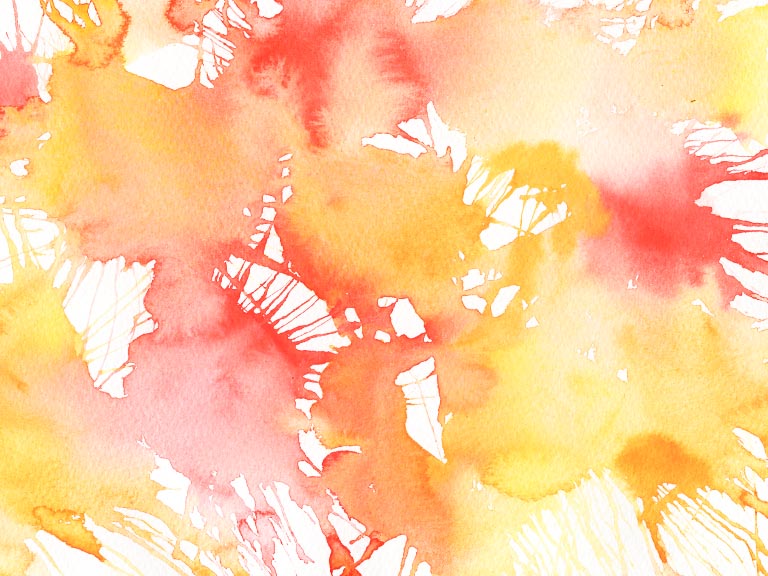
Blown watercolour
This is a great watercolour painting trick for kids (and big kids!). You just need some paper straws, loads of water and a strong pair of lungs. Create a shape in watercolour – it could be circles, ovals, triangles, even simple lines. Then grab your straw, place the end close to the paint and blow through to push out channels of paint. Turn your paper as you go to create rivers in different directions. Keep adding shapes and blowing the watercolour out until you’re happy with the painting.
You can also tip the watercolour paper up to allow the paint to drip down, for a cool melting effect.
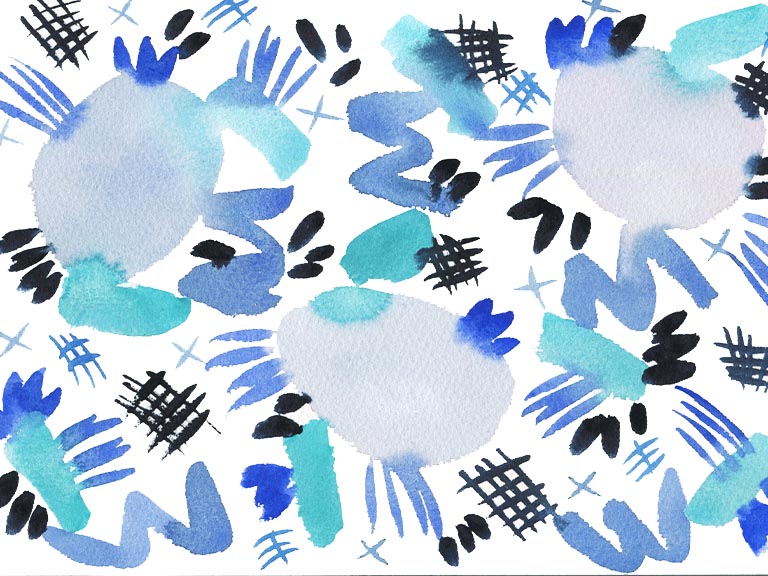
Mark making
This is a classic abstract painting technique, and there are hundreds of ways to do it! Essentially you’re making any mark on the paper with the paint. Try using different brush styles in the same painting to see how they look. Press them down, use just the tip, wiggle them, create mini strokes or build up cross-hatching and see what you like best.
Don’t limit yourself to brushes either – find other objects around the house you could use. Paper straws, a sponge, a stick, bubble wrap, some scrunched up aluminium foil – anything goes! Head out into the garden for interesting-looking sticks to dip into the paint or leaves you can use to imprint on the paper.
The bottom line on abstract watercolour
With abstract watercolour painting, there are no limits and no rules! It’s so important to be creative and just play with your supplies, without worrying about whether the finished painting is ‘good’.
If you had fun, learned something and picked up your paints today, that is good! Every single painting you finish will make you a better painter.
So often as adults we forget how to play, but we really do learn best when we’re experimenting and finding joy in it. I hope you like these painting ideas – here’s some more inspiration if you need it!
Download my free watercolour supply guide
Feeling overwhelmed and confused by watercolour paints, papers and brushes? Download my free guide filled with insider info, including a list of good supplies for every budget, and my complete supply list!
